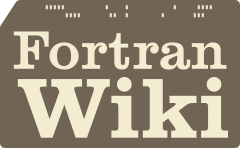Fortran Wiki
parallel MOB searching
MC Optimization Broadcast (MOB) Searching
Optimization and Correlation are embarrasingly parallel search processes which can be “shotgunned” with many search methods and starting points. Here is a Google spreadsheet containing links to the graphical output of a serial MOB search job. It shows what would be a typical massively-parallel run a MetaCalculus user might make, not just on a trivial 2D function like this that can show contour graphs, but problems of many dimensions and much greater complexity, simplified by stacking MetaCalculus holons.
With so many (1200+) searches like this, captured in a database, many would converge, as shown, but requiring hardly more elapsed time than a single search. Most engineering textbook-size problems of any complexity, even far-exceeding today’s state of the art, would complete in the blink of an eye like Google searches do now. The planned next release will simplify and fully automate this parallelized optimization, so that this MOB job will then require only a single FIND statement and starting-grid generation as if it were only a single search. It would be fanned out to many processors (or cores) in parallel.
Yet, this shows only a single MetaCalculus holon. Much deeper nesting is practical today than in the PROSE era when run costs of this scope would be prohibitive. Deep nested constrained optimization is practical for pennies now, but would have cost hundreds or thousands of dollars then, as each search level multiplies the number of model-call iterations. This is unplumbed territory of simultaneous optimization of multiple objective functions, constraint sets, and unknown-parameter sets, holding much promise for new modeling vistas.
Relational database as universal solution access interface
A truly monumental gain is provided by MOB optimization as the top-level of a problem structure whose output is interfaced through a relational database. It removes the firehose of data like was produced in this MOB run. Even if what is being optimized is a massive simulation, the final output is merely a row of summarizing numbers extracted from a table. Thus it doesn’t matter if the output device is just a cell phone. The key information is just as easy to access from all sectors of society, whether from K-12 classrooms or advanced research labs.
